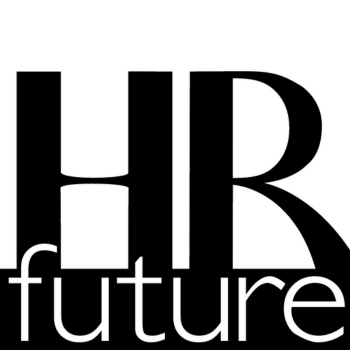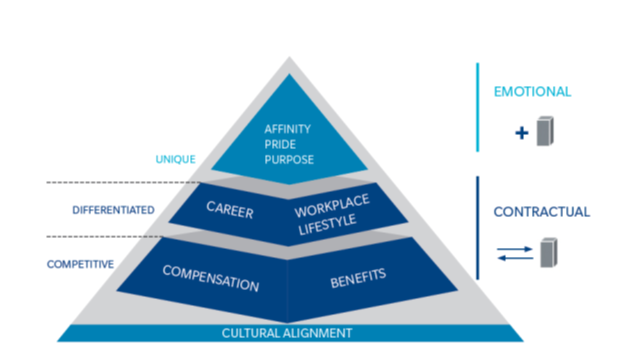Give your middle managers the best chance of succeeding.
While I was having dinner with a friend the other night, she complained about being overworked, unappreciated and misunderstood at work. She ended her lament with, “I thought this job would be a great opportunity to step up and prove myself but I just feel like the meat in a rather unappetising sandwich. I haven’t had any leadership training and I work ridiculous hours with no thanks from anyone and resentment from my family.”
My friend is a middle manager in a large teaching hospital, but this isn’t the first time I’ve heard such a protest. This is often the experience and complaint of so many middle managers. So why do they have such a rough time when they are the glue that holds an organisation together, bridging the gap between senior leaders and frontline workers? After all, aren’t these the people we rely on to implement strategy and organisational change and at the same time keep employees engaged and motivated?
A recent Harvard Business Review study suggests that middle managers are the unhappiest group of workers. And in my conversations with senior managers and frontline staff, I was struck by the opinions of those to whom I spoke. It seems although they’re much maligned as a group, senior leaders often see middle managers as an unwieldy group of underperformers who prevent their organisation from achieving its strategic objectives. What an indictment!
What’s more, some of the frontline staff I spoke to described middle managers as slaves to senior leaders, cracking the whip to get things done quickly. In their view, they are not prepared to innovate; they’ve lost touch with operational reality and no longer act as an advocate for their people. “They have become one of ‘them’ and just want to look good at our expense,” one person told me.
So why are middle managers getting criticised from all angles? Are these accusations fair? There are several hypotheses that warrant some attention.
Is it because middle managers are struggling to step up to the job?
The transition from being an individual contributor or expert to being a leader of others is not easy. Organisations are failing to give middle managers the support and tools they need to do this. In order to succeed, middle managers need to understand and develop the transitional behaviours that are required to help them step up. Currently, attention and investment is being made into the development of those at the top and on the frontline, but middle managers are missing out on these development opportunities. According to a recent study, only 50 per cent of mid-level managers received any kind of formal leadership development in 2012.
Each leadership stage requires different skill-sets and values, and at each transition, leaders have to develop these in order to lead successfully. This framework helps middle managers focus more clearly on the requirements of what they need to stop, start and keep doing. If they can get the first two leadership ‘turns’ in their careers right, it will help them to increase their flexibility and effectiveness.
Is it because organisations in 2015 are much flatter?
With more and more businesses operating in a matrix structure, managers have a broader set of responsibilities and are having to adopt a different mind-set in order to engage people. Middle managers, now more than ever, need to effectively influence a group wider than just those whom they directly line manage.
Is it because organisations are struggling to flex and adapt to the megatrends affecting today’s workforce?
The composition of the workforce has never been so complex. Managers have the additional challenges of working with generations X, Y and Z as well as record numbers of part timers. These employees are all working together with vastly different expectations – a challenge that is new and demanding. On top of that, middle managers are having to deal with the legacy of the recession and motivating a workforce which has had its psychological contract with the organisation broken. Employees no longer have the same sense of loyalty and are not prepared to consistently put in discretionary effort to do a great job. Those on the frontline have become disenfranchised with their work places, and their expectations of their managers are increasingly unrealistic, making it near-impossible for a middle manager to succeed.
These are all valid theories. However, I think the main problem is located somewhere else. Middle managers find themselves as ‘the meat in a rather unappetising sandwich’ (to use the words of my friend) because senior managers are not creating the right conditions for them to succeed. They are not clear about the strategic direction for their organisation, do not communicate effectively or often enough, and do not support and mentor this critical cadre of the workforce.
Middle managers are the driving force behind the execution of organisational priorities and the lynch pin that aids the communication between many disparate teams. However, what they end up doing is trying to navigate various relationships upwards, downwards and amongst peers which can be emotionally draining.
Silver bullet to success
Hire and develop people who believe what you believe, and not those who just do a job. This is no mean feat and requires approaching communication in a radically different way. There is a growing body of research which clearly shows that the way senior leaders have been trying to engage with their workforce has been fundamentally flawed. In order to truly inspire and create clarity, our leaders need to take a broader view on how they communicate.
– They need to tell compelling stories about why the organisation exists, its purpose and core beliefs;
– They need to focus on how the organisation is going to achieve its strategic ambitions; and
– And then, and only then, should they get to what the organisation needs to actually do.
But most leaders do the exact opposite and start with the ‘what’ – jumping straight to operational or tactical targets without any broader purpose. Naturally, this is also where new middle managers tend to focus their efforts as that’s all they’ve ever known. But this is where we’ve been going wrong!
Three steps to re-engaging your middle managers:
Trend 1: Communicate the ‘why’ up front.
Why are we doing what we’re doing? Why are we making these changes? Engage with people’s sense of purpose, which in turn will influence their decision making and behaviour.
Trend 2: Help middle managers understand their role within your organisation.
By understanding the part they have to play in the bigger picture, and by being personally engaged, they’ll be able to better communicate these important messages to the frontline.
Trend 3: Continually support and develop your managers.
Mid-level managers are expected to possess a huge variety of skills and traits, but waiting for someone to ‘mature in the role’ is no longer an option. These mid-level managers will one day be the future leaders of your organisation – so not only do you want to develop in them the right behaviours for them to be successful managers, but also the right traits and behaviours to support your business strategy.
Not convinced? Think about how many times you’ve said, “This doesn’t feel right,” or you’ve had a gut feeling about something. Samuel Pierpont Langley, one of the greatest minds of the 19th Century and renowned astrophysicist was given an investment of $50,000 to develop the first flying machine. He had the support of the good and the great. Langley wanted to be rich and famous and was in pursuit of the result.
At the same time, Wilbur and Orville Wright, two brothers from Ohio, without a college education or any financial backing, also shared the dream of building a flying machine. The difference was that they were driven by a cause, a purpose and a belief that they could change the world for the better.
On December 17, 1903 the Wright brothers took flight for the first time and Langley subsequently resigned – he was no longer going to be rich and famous or the first.
Imagine how successful our organisations could be if we helped middle managers tell compelling stories, helping the ‘why’ to come to life.
Lubna Haq is a Consultant for Leadership Transformation at Hay Group, www.haygroup.com.
This article appeared in the August 2015 issue of HR Future magazine.

















